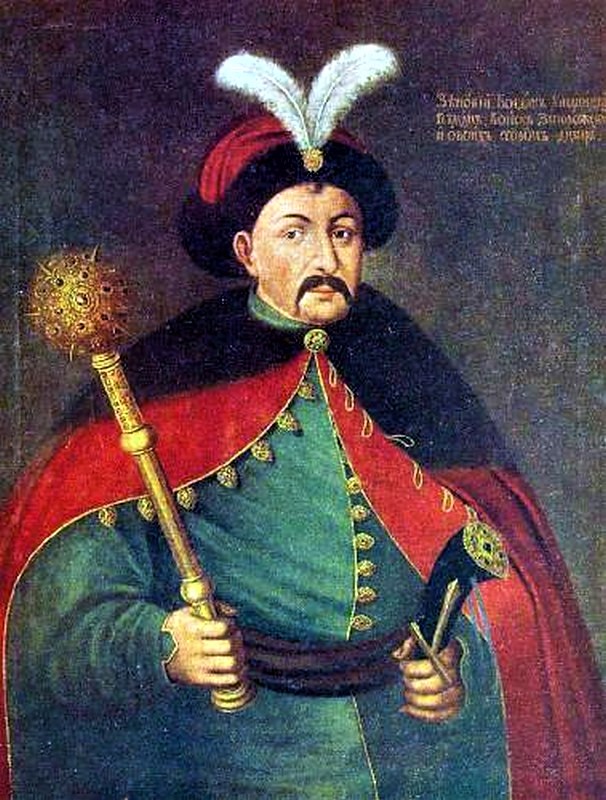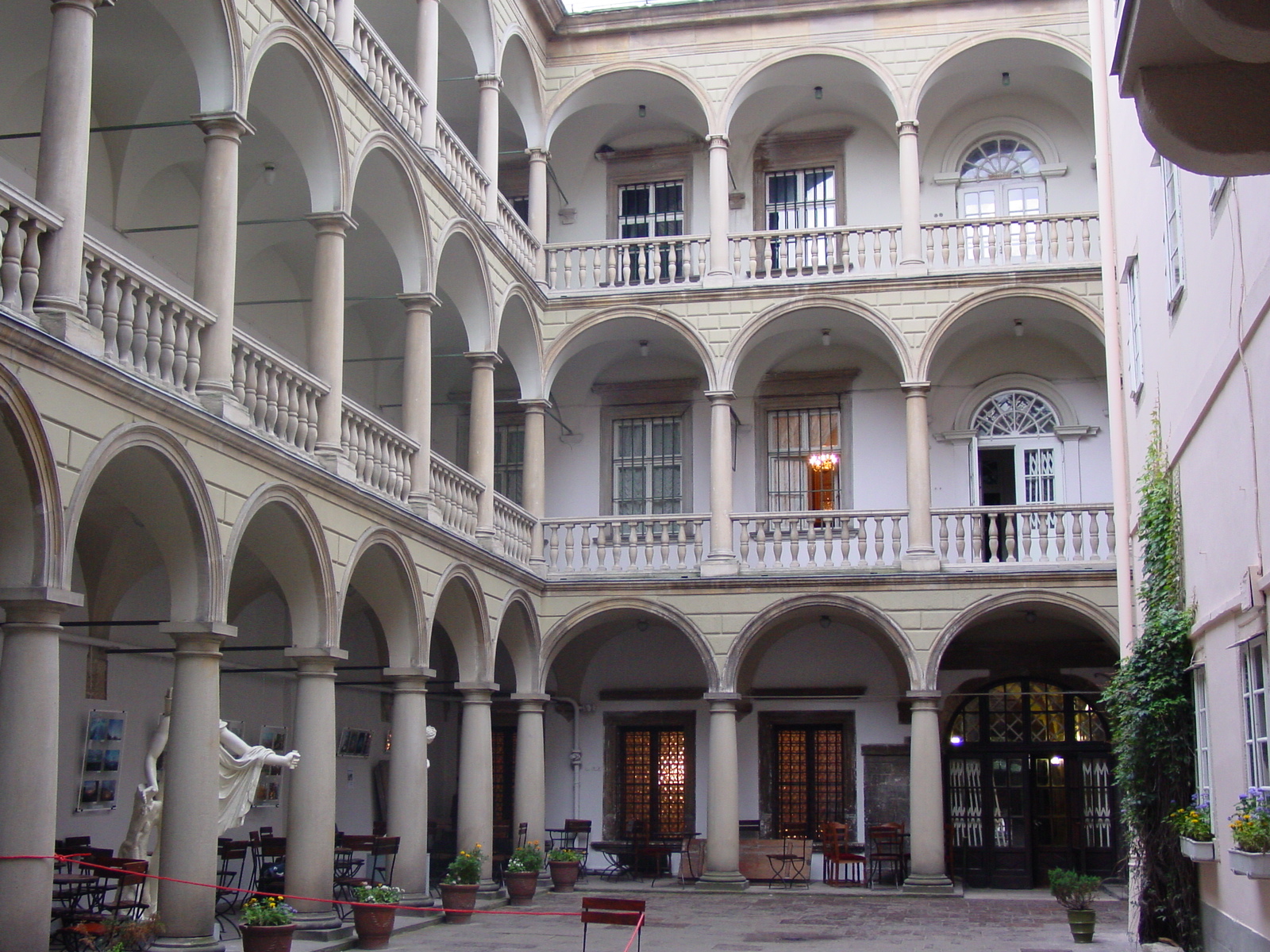|
Maksym Kryvonis
Maksym Kryvonis ( Ukrainian: ''Максим Кривоніс'', Polish: ''Maksym Krzywonos''; literally means "crooked-nose") was one of the Cossack leaders and a commander of the Ukrainian peasants against the Polish–Lithuanian Commonwealth. For the first time in the history of Lviv, during the siege of the city his regiment captured the Vysokyi Zamok Castle, which was defended by the strong Polish–Lithuanian garrison. Kryvonis was one of the most important figures during the Khmelnytskyi Uprising in 1648. Origins The question about his origins remains unresolved. A Polish pamphlet published in 1648 claimed that he was a serf of the Nemyrych family (a hypothesis favoured by Soviet historiography). However, a German source about a meeting with Kryvonis in 1648 says that he is of Scottish origin ("ein gebohrenen Schott"). In this case his real name may well have been not a nickname based on his crooked or broken nose, but a translation of his Scottish family name Cam ... [...More Info...] [...Related Items...] OR: [Wikipedia] [Google] [Baidu] |
Zamość
Zamość (; ; ) is a historical city in southeastern Poland. It is situated in the southern part of Lublin Voivodeship, about from Lublin, from Warsaw. In 2021, the population of Zamość was 62,021. Zamość was founded in 1580 by Jan Zamoyski, Chancellor (Poland), Grand Chancellor of Poland, who envisioned an ideal city. The historical centre of Zamość was added to the UNESCO UNESCO World Heritage Site, World Heritage List in 1992, following a decision of the sixteenth ordinary session of the World Heritage Committee, held between 7 and 14 December 1992 in Santa Fe, New Mexico, United States; it was recognized for being "a unique example of a Renaissance in Poland, Renaissance town in Central Europe". Zamość is about from the Roztocze National Park. History Zamość was founded in 1580 by the Kanclerz, Chancellor and Hetman (head of the army of the Polish–Lithuanian Commonwealth), Jan Zamoyski, on the trade route linking western and northern Europe with the Black Sea ... [...More Info...] [...Related Items...] OR: [Wikipedia] [Google] [Baidu] |
Kamianets-Podilskyi Castle
The Kamianets-Podilskyi Castle (; ; ) is a former Ruthenian-Lithuanian castle and a later three-part Polish fortress located in the historic city of Kamianets-Podilskyi, Ukraine, in the historic region of Podilia in the western part of the country. Its name is attributed to the root (linguistics), root word '''kamin''', from the Slavic languages, Slavic word for 'stone'. Historical accounts date Kamianets-Podilskyi Castle to the early 14th century, although recent archaeological evidence has proved human existence in the area back to the 12th or 13th century. Initially built to protect the bridge connecting the city with the mainland, the castle sits on top of a peninsula carved out by the winding Smotrych River, forming a natural defense system for Kamianets-Podilskyi's historic Old Town neighborhood. Its location on a strategic transport crossroad in Podilia made the castle a prime target for foreign invaders, who rebuilt the castle to suit their own needs, adding to its multi ... [...More Info...] [...Related Items...] OR: [Wikipedia] [Google] [Baidu] |
Jeremi Wiśniowiecki
Prince Jeremi Michał Korybut Wiśniowiecki, nicknamed ''Hammer on the Cossacks'' (), was a notable member of the aristocracy of the Polish–Lithuanian Commonwealth, Prince of Vyshnivets, Lubny and Khorol in the Crown of the Kingdom of Poland and the father of the future King of Poland, Michael I. A notable magnate and military commander with Ruthenian and Moldavian origin, Wiśniowiecki was heir of one of the biggest fortunes of the state and rose to several notable dignities, including the position of voivode of the Ruthenian Voivodship (today Poland and Ukraine) in 1646. His conversion from Eastern Orthodoxy to Roman Catholicism caused much dissent in Ruthenian lands (part of the Polish–Lithuanian Commonwealth). Wiśniowiecki was a successful military leader as well as one of the wealthiest magnates of Poland, ruling over lands inhabited by 230,000 people. Biography Youth Jeremi Michał Korybut Wiśniowiecki was born in 1612; neither the exact date nor the pla ... [...More Info...] [...Related Items...] OR: [Wikipedia] [Google] [Baidu] |
Cherkasy Regiment
Cherkasy (, ) is a city in central Ukraine. Cherkasy serves as the administrative centre of Cherkasy Oblast as well as Cherkasy Raion within the oblast. The city has a population of Cherkasy is the cultural, educational and industrial centre of Cherkasy Oblast and Central Economical Region of Ukraine. Cherkasy has been known since the 13th century and played a great role in the history of Ukraine. The city was the centre of the land of the Cossacks; its citizens took part in Khmelnytsky Uprising, Khmelnychchyna and Koliivshchyna Cossack and peasant rebellions. The city is located on the right bank of Dnieper River (specifically at the Kremenchuk Reservoir), about south of the nation's capital, Kyiv. Cherkasy is divided into 2 Urban districts of Ukraine, urban districts: Sosnivskyi (with Orshanets village) and Prydniprovskyi. It hosts the administration of Cherkasy urban hromada, one of the hromadas of Ukraine. In June 2011, the city celebrated its 725th anniversary. Geogra ... [...More Info...] [...Related Items...] OR: [Wikipedia] [Google] [Baidu] |
Colonel
Colonel ( ; abbreviated as Col., Col, or COL) is a senior military Officer (armed forces), officer rank used in many countries. It is also used in some police forces and paramilitary organizations. In the 17th, 18th, and 19th centuries, a colonel was typically in charge of a regiment in an army. Modern usage varies greatly, and in some cases, the term is used as an Colonel (title), honorific title that may have no direct relationship to military. In some smaller military forces, such as those of Monaco or the Holy See, Vatican, colonel is the highest Military rank, rank. Equivalent naval ranks may be called Captain (naval), captain or ship-of-the-line captain. In the Commonwealth of Nations, Commonwealth's air force ranking system, the equivalent rank is group captain. History and origins By the end of the late medieval period, a group of "companies" was referred to as a "column" of an army. According to Raymond Oliver, , the Spanish began explicitly reorganizing part of thei ... [...More Info...] [...Related Items...] OR: [Wikipedia] [Google] [Baidu] |
Cameron (surname)
Cameron is a Scottish surname and thus somewhat common throughout the English-speaking world. There are several possible origins. One is from a Gaelic-language nickname, derived from ''cam'' ("crooked", "bent") and ''sròn'' or ''abhainn'' ("nose", "river"). Another is from any of the various places called Cameron, especially such places located in Fife, Edinburgh or Lennox, Scotland.. This webpage cited: . In the Scottish Lowlands the surname indicates that the original bearer lived in either Cameron near Edinburgh, Cameron in Lennox, or Cameron in Fife. Thus, the name in the Lowlands is of territorial origin, from one of the three places mentioned. /ref> The English-language surname can be rendered into Scottish Gaelic as: ''Camarran'' (masculine), ''Chamarran'' (feminine); or as ''Camshron'' (masculine) and ''Chamshron'' (feminine). List of people with the surname * Alan Cameron (other) * Alexander Cameron (other) * Alfred B. Cameron (1855–1913), American po ... [...More Info...] [...Related Items...] OR: [Wikipedia] [Google] [Baidu] |
Scotland
Scotland is a Countries of the United Kingdom, country that is part of the United Kingdom. It contains nearly one-third of the United Kingdom's land area, consisting of the northern part of the island of Great Britain and more than 790 adjacent Islands of Scotland, islands, principally in the archipelagos of the Hebrides and the Northern Isles. To the south-east, Scotland has its Anglo-Scottish border, only land border, which is long and shared with England; the country is surrounded by the Atlantic Ocean to the north and west, the North Sea to the north-east and east, and the Irish Sea to the south. The population in 2022 was 5,439,842. Edinburgh is the capital and Glasgow is the most populous of the cities of Scotland. The Kingdom of Scotland emerged as an independent sovereign state in the 9th century. In 1603, James VI succeeded to the thrones of Kingdom of England, England and Kingdom of Ireland, Ireland, forming a personal union of the Union of the Crowns, three kingdo ... [...More Info...] [...Related Items...] OR: [Wikipedia] [Google] [Baidu] |
Maxym Kryvonis (woodcut Of Kryvonis's Likeness, Probably A Polish Caricature)
Maksym Kryvonis ( Ukrainian: ''Максим Кривоніс'', Polish: ''Maksym Krzywonos''; literally means "crooked-nose") was one of the Cossack leaders and a commander of the Ukrainian peasants against the Polish–Lithuanian Commonwealth. For the first time in the history of Lviv, during the siege of the city his regiment captured the Vysokyi Zamok Castle, which was defended by the strong Polish–Lithuanian garrison. Kryvonis was one of the most important figures during the Khmelnytskyi Uprising in 1648. Origins The question about his origins remains unresolved. A Polish pamphlet published in 1648 claimed that he was a serf of the Nemyrych family (a hypothesis favoured by Soviet historiography). However, a German source about a meeting with Kryvonis in 1648 says that he is of Scottish origin ("ein gebohrenen Schott"). In this case his real name may well have been not a nickname based on his crooked or broken nose, but a translation of his Scottish family name Camero ... [...More Info...] [...Related Items...] OR: [Wikipedia] [Google] [Baidu] |
History Of Lviv
Lviv ( Ukrainian: , ''L’viv''; ; or ''Leopoldstadt'' (''archaic''); ; , see also other names) is an administrative center in western Ukraine with more than a millennium of history as a settlement, and over seven centuries as a city. Prior to the creation of the modern state of Ukraine, Lviv had been part of numerous states and empires, including, under the name ''Lwów'', Poland and later the Polish–Lithuanian Commonwealth; under the name ''Lemberg'', the Austrian and later Austro-Hungarian Empires; the short-lived West Ukrainian People's Republic after World War I; Poland again; and the Soviet Union. In addition, both the Swedes and the Ottoman Turks made unsuccessful attempts to conquer the city. Early history Recent archaeological excavations show that the area of Lviv has been populated since at least the 5th century, with the gord at -Voznesensk Street in Lychakivskyi District attributed to White Croats. In 981, the Cherven Cities were conquered by Volodymyr th ... [...More Info...] [...Related Items...] OR: [Wikipedia] [Google] [Baidu] |
Ukrainians
Ukrainians (, ) are an East Slavs, East Slavic ethnic group native to Ukraine. Their native tongue is Ukrainian language, Ukrainian, and the majority adhere to Eastern Orthodox Church, Eastern Orthodoxy, forming the List of contemporary ethnic groups, second largest ethno-linguistic community. At around 46 million worldwide, Ukrainians are the second largest Slavs, Slavic ethnic group after Russians. Ukrainians have been Endonym and exonym, given various names by foreign rulers, which have included Polish–Lithuanian Commonwealth, the Habsburg monarchy, the Austrian Empire, and then Austria-Hungary. The East Slavic population inhabiting the territories of modern-day Ukraine were known as Ruthenians, referring to the territory of Ruthenia; the Ukrainians living under the Russian Empire were known as Little Russians, named after the territory of Little Russia. The ethnonym Ukrainian, which was associated with the Cossack Hetmanate, was adopted following the Ukrainian natio ... [...More Info...] [...Related Items...] OR: [Wikipedia] [Google] [Baidu] |
Zaporozhian Cossacks
The Zaporozhian Cossacks (in Latin ''Cossacorum Zaporoviensis''), also known as the Zaporozhian Cossack Army or the Zaporozhian Host (), were Cossacks who lived beyond (that is, downstream from) the Dnieper Rapids. Along with Registered Cossacks and Sloboda Cossacks, Zaporozhian Cossacks played an important role in the history of Ukraine and the ethnogenesis of Ukrainians. The Zaporozhian Sich grew rapidly in the 15th century from serfs fleeing the more controlled parts of the Polish–Lithuanian Commonwealth. The least controlled region, that was located between the Dniester and mid-Volga was first known from the 15th century as the '' Wild Fields'', which was subject to colonization by the Zaporozhian Cossacks.Shcherbak, V.Wild Field (ДИКЕ ПОЛЕ). ''Encyclopedia of History of Ukraine''. 2004 Zaporozhian Host became established as a well-respected political entity with a parliamentary system of government. During the course of the 16th, 17th and well into the 18th c ... [...More Info...] [...Related Items...] OR: [Wikipedia] [Google] [Baidu] |



